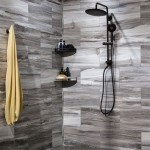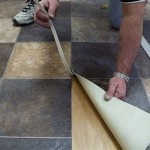How Much Does Laminate Flooring Installation Cost Per Square Foot?
Laminate flooring has become a popular choice for homeowners seeking an affordable, durable, and aesthetically pleasing flooring option. Its ability to mimic the look of hardwood, tile, or stone at a fraction of the cost contributes to its widespread appeal. However, understanding the total cost of a laminate flooring project requires more than just considering the price of the materials. Installation costs can significantly impact the overall budget, making it crucial to explore the factors that determine the per-square-foot installation price of laminate flooring.
The cost of installing laminate flooring is typically measured on a per-square-foot basis. This allows for easy comparison between different projects and provides a more accurate estimate based on the specific area being covered. While national averages exist, the actual cost can vary considerably depending on several factors, including location, the complexity of the installation, and the experience of the installer.
This article will explore the various components that contribute to the per-square-foot installation cost of laminate flooring, providing a detailed overview of the pricing structure and offering insights into how to make informed decisions when planning a laminate flooring project.
Factors Influencing Laminate Flooring Installation Costs
Several factors contribute to the final price per square foot for laminate flooring installation. These factors can be broadly categorized into material costs, labor costs, and site-specific conditions. Understanding these influences is critical for budgeting accurately and avoiding unexpected expenses.
Material Costs: While this article primarily focuses on installation costs, it's essential to acknowledge the influence of the laminate flooring material itself. The price of laminate flooring varies significantly based on its quality, thickness, wear layer, and design. Higher-end laminate products with enhanced features will naturally lead to a higher overall project cost, impacting the amount homeowners are willing to spend on installation.
Beyond the laminate planks, other materials contribute to the total cost. These include underlayment, which is a crucial component for moisture protection, sound insulation, and providing a smooth surface for the flooring. Quality underlayment can add to the material expenses, but it is often a worthwhile investment for long-term performance. Transition strips are also necessary to seamlessly connect the laminate flooring to other flooring types or to accommodate doorways. The cost of these transition strips will depend on the material (e.g., vinyl, wood, metal) and the quantity required.
Fasteners, such as nails or staples (if necessary, depending on the installation method), and adhesive (for certain types of laminate) also contribute to the material costs. These items are typically relatively inexpensive, but they should still be factored into the overall budget.
Labor Costs: The labor cost is often the most significant portion of the per-square-foot installation price. Labor rates vary widely depending on geographic location, the installer's experience and qualifications, and the complexity of the job. Areas with a higher cost of living typically have higher labor rates. Experienced installers with a proven track record may charge more than less experienced contractors, but their expertise can ensure a higher quality installation and minimize potential problems.
The complexity of the job also significantly influences labor costs. A simple, rectangular room with no obstacles will be less expensive to install than a room with intricate angles, curves, or built-in features. Cutting laminate planks around doorways, pipes, and other obstructions requires more time and skill, which translates to higher labor costs. The removal of existing flooring can also add to the labor costs, especially if the old flooring is difficult to remove or requires specialized tools.
Furthermore, the preparation of the subfloor is a critical step that can impact labor costs. If the subfloor is uneven, damaged, or requires significant repairs, the installer will need to spend additional time and effort to ensure a smooth and level surface for the laminate flooring. This preparation work can include leveling the subfloor with self-leveling compound, patching holes or cracks, and removing debris. The extent of subfloor preparation required can significantly influence the overall labor cost.
Travel time and mobilization fees can also be added to labour costs. Depending on the contractor and the distance of the project site from their base of operation, some installers include travel time or mobilization fees in their estimate. These costs cover the time and expenses associated with traveling to the job site and setting up the necessary equipment.
Site-Specific Conditions: The specific conditions of the installation site can also influence the per-square-foot installation cost. As previously mentioned, the condition of the subfloor is a critical factor. Uneven or damaged subfloors require more preparation, increasing labor costs. Other site-specific conditions that can impact costs include the presence of asbestos or other hazardous materials, which may require specialized removal procedures and permits. Accessibility to the installation area can also affect costs. If the installer has difficulty accessing the site, such as having to carry materials up several flights of stairs, this can increase the labor time and therefore the expense.
Environmental factors such as temperature and humidity can also affect installation. Laminate flooring needs to acclimate to the environment for a period of time prior to the installation to avoid expansion and contraction issues. If the environment is not suitable, it can increase the difficulty and time it takes to install the flooring. This may require the use of climate control methods which will add to additional costs.
Estimating Laminate Flooring Installation Costs
Obtaining accurate estimates is crucial for budgeting effectively for a laminate flooring project. The most reliable approach is to obtain multiple quotes from reputable flooring contractors. When requesting estimates, it is essential to provide contractors with as much detail as possible about the project, including the square footage of the area, the type of laminate flooring being used, and any site-specific conditions that may affect the installation.
Contractors should provide a written estimate that clearly outlines all costs, including materials, labor, and any additional fees. The estimate should also specify the scope of work, including subfloor preparation, removal of existing flooring, and any other services that are included in the price. It is crucial to carefully review the estimates and compare them to ensure that all contractors are bidding on the same scope of work. This will help to avoid misunderstandings and ensure that you are getting the best value for your money.
When evaluating estimates, it is important to consider more than just the bottom-line price. Consider the contractor's experience, qualifications, and reputation. Check online reviews and ask for references from previous clients. A contractor with a proven track record of quality workmanship may be worth paying a slightly higher price.
Be wary of estimates that seem too good to be true. The lower the cost, the more likely it is that the contractor is cutting corners or using substandard materials. It is always better to pay a fair price for quality workmanship and materials than to risk problems down the road.
It's worthwhile to inquire about potential price fluctuations. Material costs can change, and unforeseen issues can arise during installation. A reputable contractor will have a contingency plan and be transparent about how such situations are handled and how they might affect the final cost.
Tips for Reducing Laminate Flooring Installation Costs
While the per-square-foot installation cost of laminate flooring is influenced by several factors, there are steps homeowners can take to potentially reduce the overall project expenses. Careful planning, preparation, and smart choices during the selection process can contribute to significant cost savings.
DIY Considerations: For homeowners with some DIY experience and a willingness to invest the time and effort, installing laminate flooring themselves can significantly reduce labor costs. Laminate flooring is designed for relatively easy installation, with many products featuring click-lock systems that require minimal tools and expertise. However, it is essential to carefully research the installation process and ensure that you have the necessary skills and tools before attempting a DIY project. Mistakes during installation can be costly to correct, so it is important to proceed with caution. Proper subfloor preparation is essential for a successful DIY installation.
Subfloor Preparation: Addressing subfloor issues before hiring an installer can save on labor costs. This may involve leveling the subfloor, patching holes, or removing debris. Completing these tasks yourself, if possible, can reduce the amount of time the installer needs to spend on subfloor preparation, thereby lowering the labor costs. Ensure that any DIY subfloor preparation is performed according to the manufacturer's instructions and best practices.
Material Selection: Choosing a standard laminate flooring product with a simpler design can be more cost-effective. Intricate patterns, thicker wear layers, and specialized features often come with a higher price tag. By selecting a more basic laminate product, you can reduce the material costs and potentially lower the overall project expense. Researching different brands and comparing prices can help you find the best value for your budget without sacrificing quality.
Timing and Negotiation: Installation costs can sometimes be negotiated, particularly during the off-season or when contractors are less busy. Obtaining multiple quotes and comparing prices can provide leverage for negotiation. Additionally, being flexible with the installation schedule can sometimes result in cost savings. Ask contractors if they offer any discounts or promotions during certain times of the year.
Debris Removal: Discuss debris removal options with the contractor. Some contractors include debris removal in their installation price, while others charge an additional fee. If you are willing to handle the debris removal yourself, you can potentially reduce the overall project cost. This can involve disposing of old flooring, packaging materials, and other waste generated during the installation process. Be sure to follow local regulations for proper waste disposal.
Understanding the intricacies of laminate flooring installation costs allows homeowners to make informed decisions, budget accurately, and potentially save money on their flooring projects. By considering the factors discussed, homeowners can approach their flooring project with confidence and achieve a beautiful and durable laminate floor that fits their needs and budget. Remember to always prioritize quality workmanship and materials to ensure a long-lasting and visually appealing result.

2024 Laminate Flooring Installation Cost Fixr Com

The Complete Guide To Flooring Costs By Type Twenty Oak

2024 Laminate Flooring Installation Cost Fixr Com

Cost To Install Laminate Flooring Forbes Home

2024 Laminate Flooring Installation Cost Fixr Com

2024 Laminate Flooring Installation Cost Fixr Com

How Much Does Flooring Installation Cost 2025

The Cost To Install Laminate Flooring In 2025 Nerdwallet

Cost To Install Laminate Floors The Home Depot

How Much Does Flooring Installation Cost Angi
Related Posts








